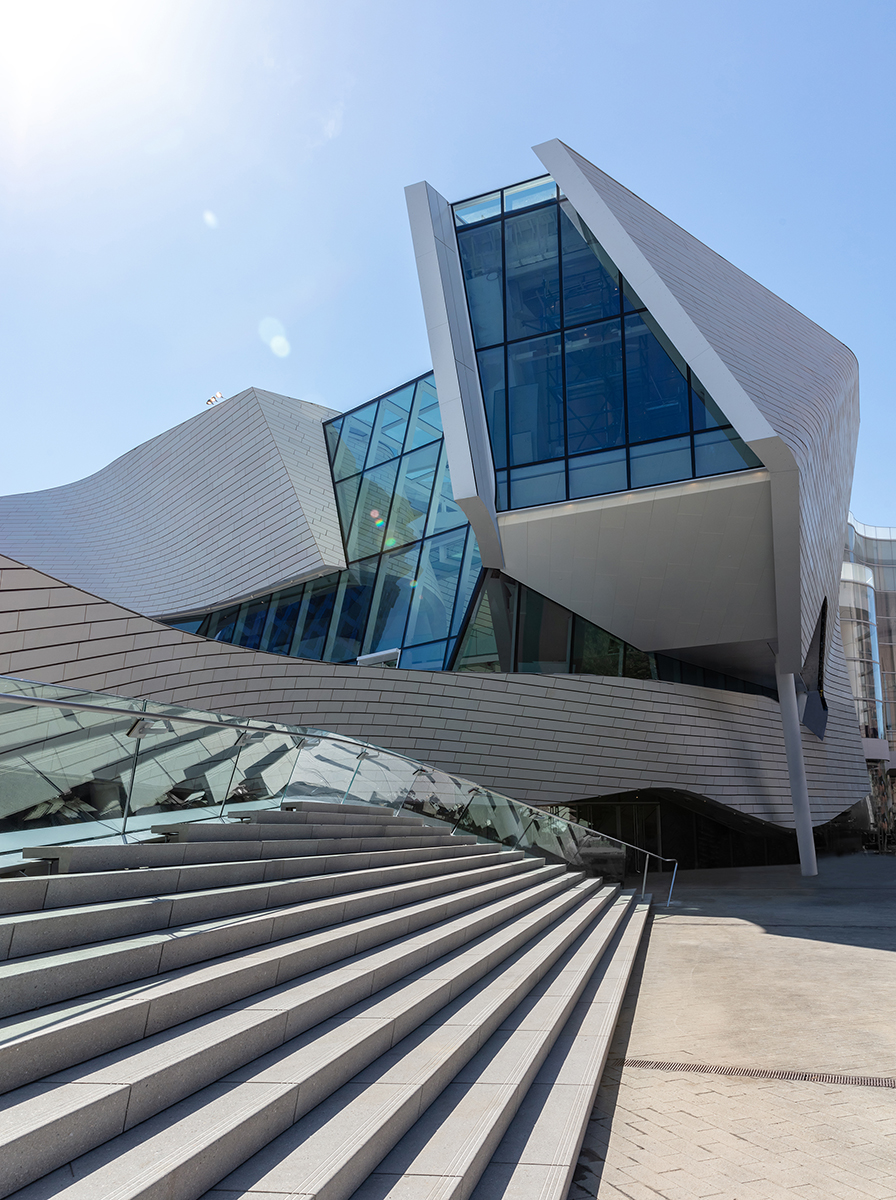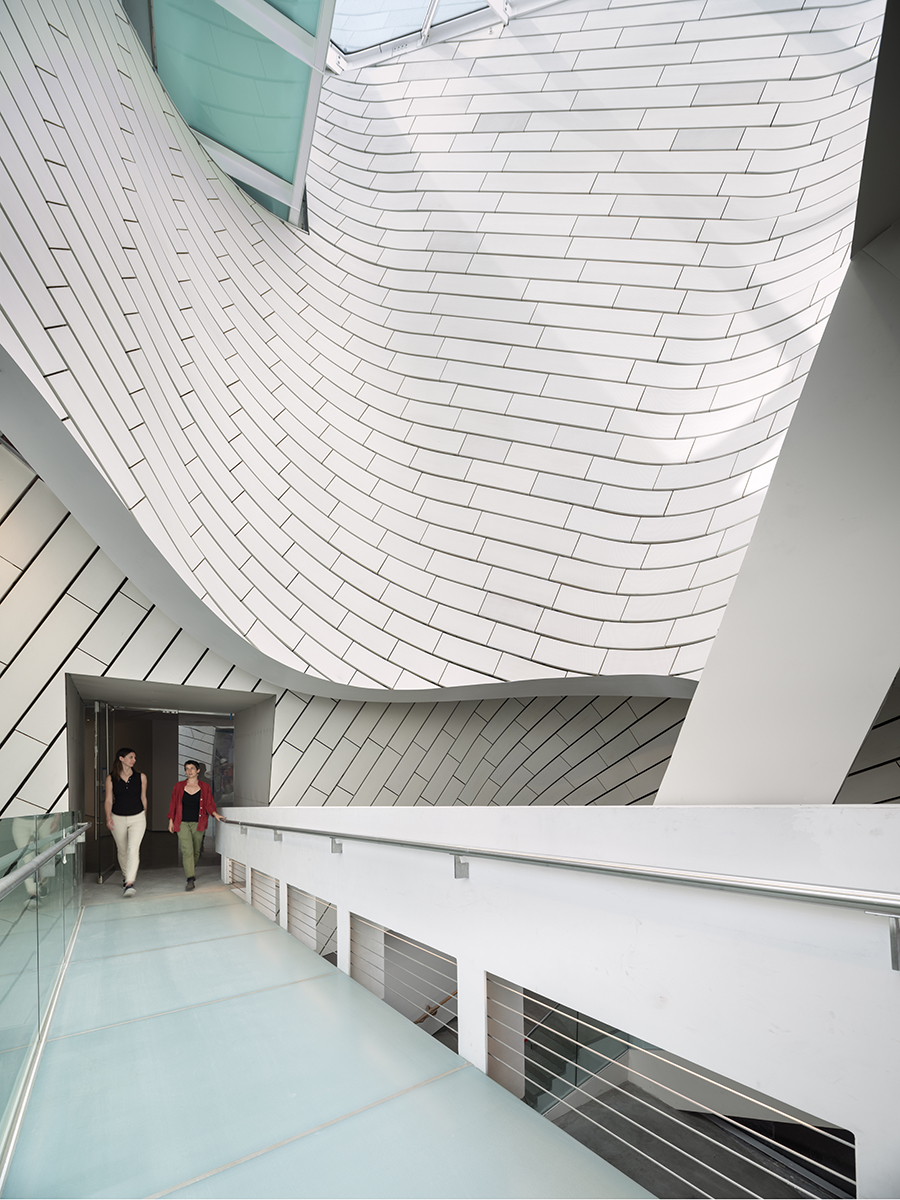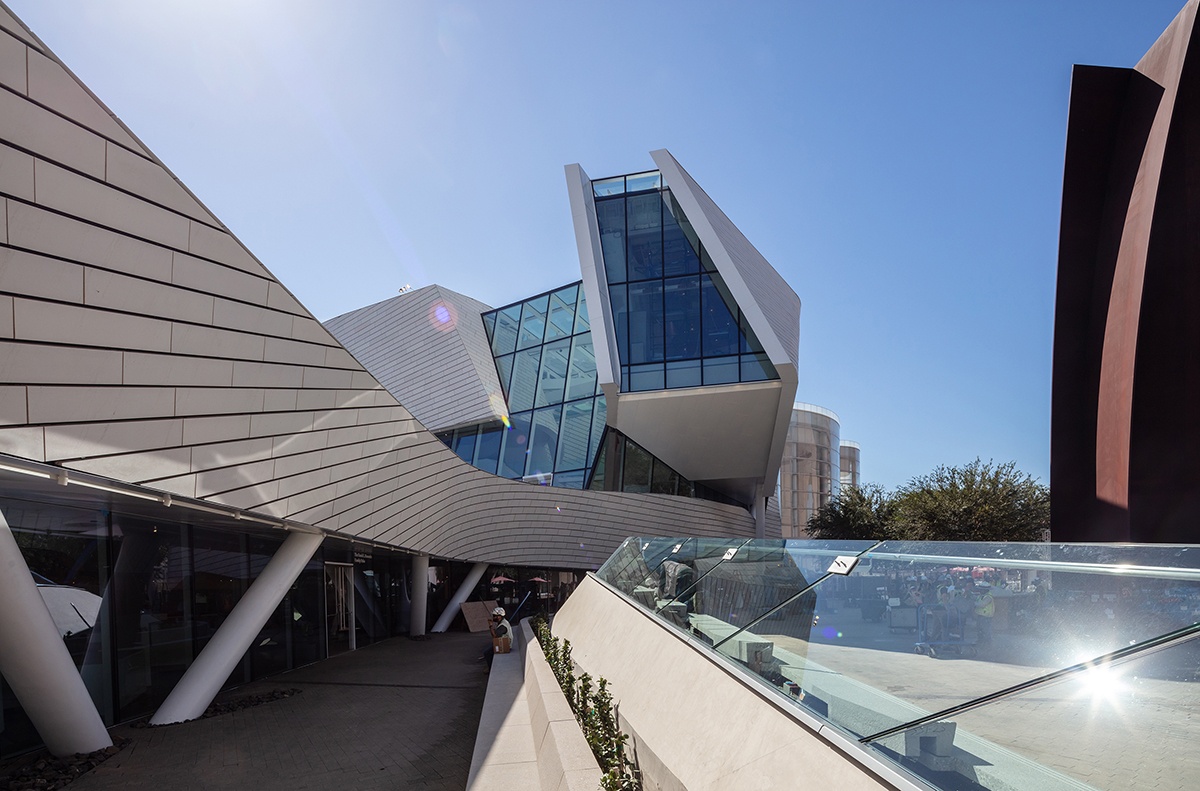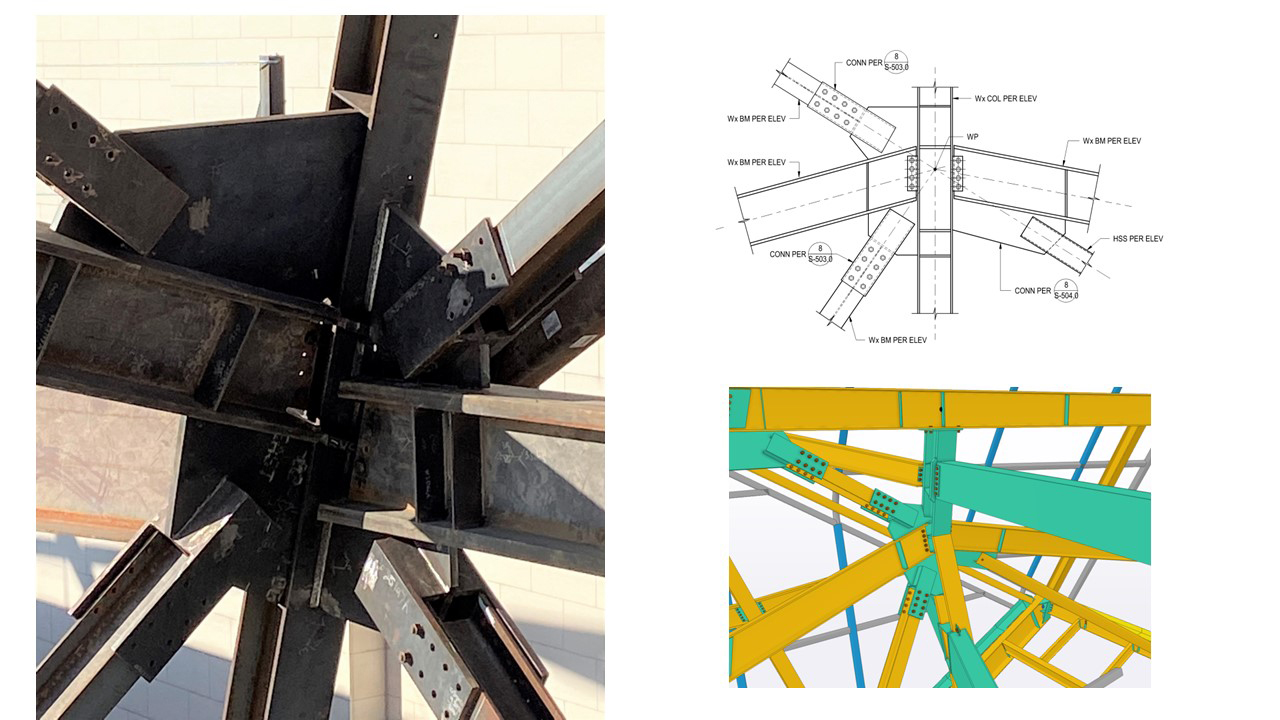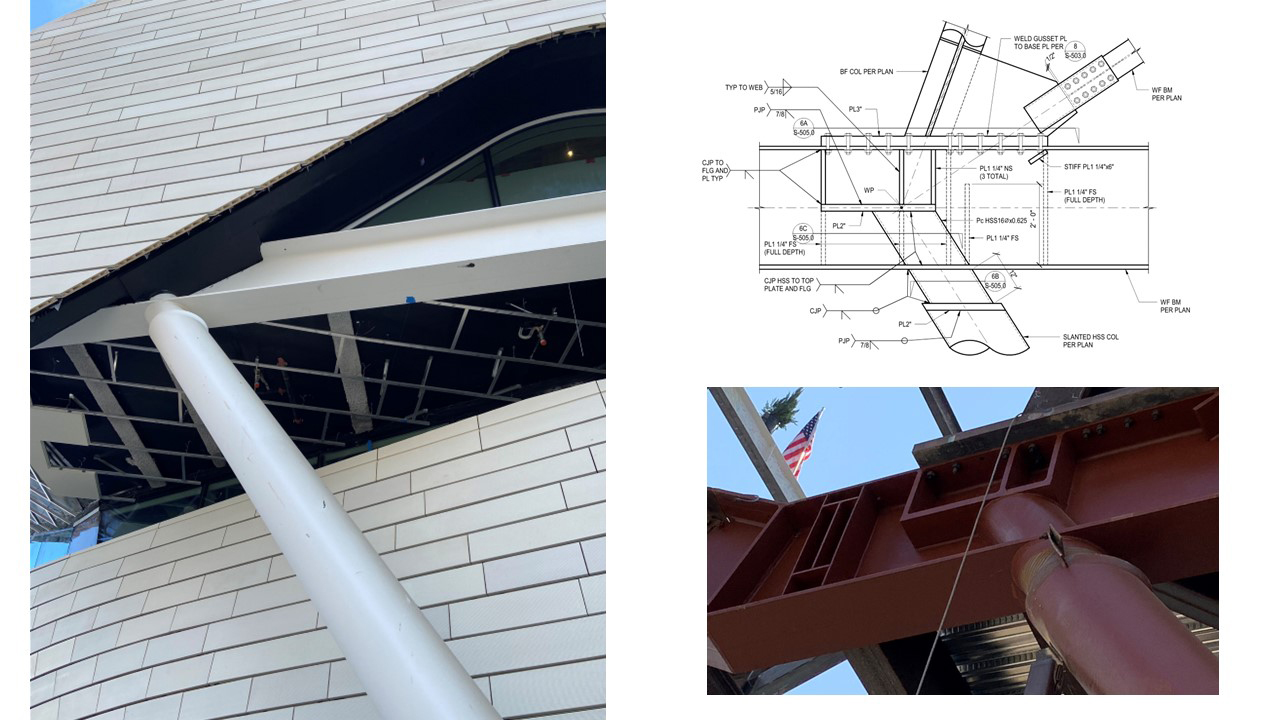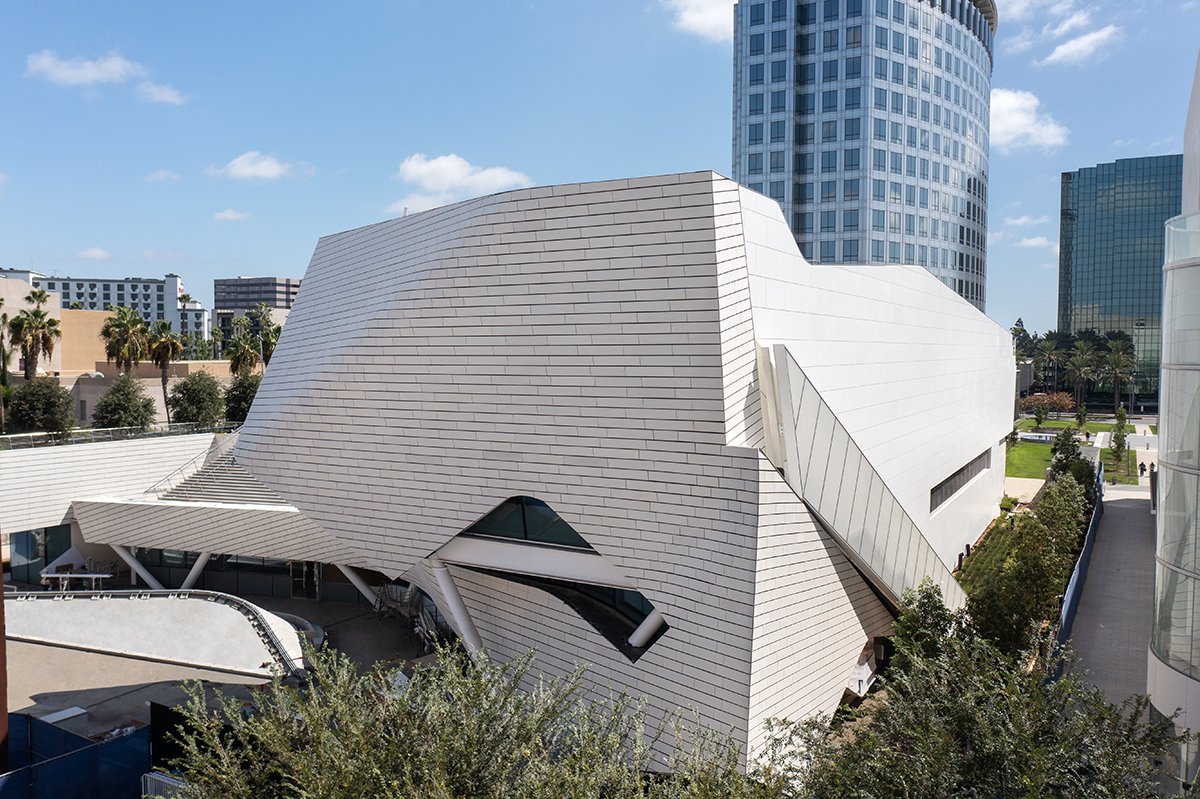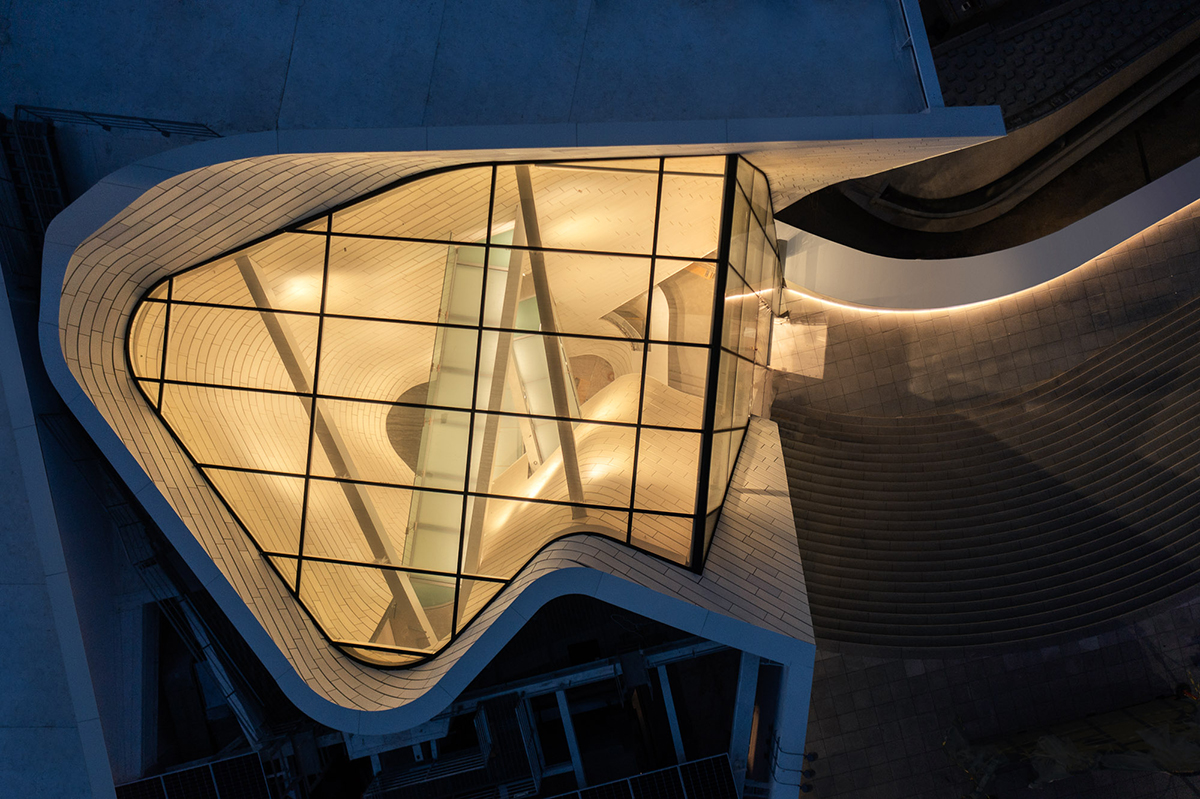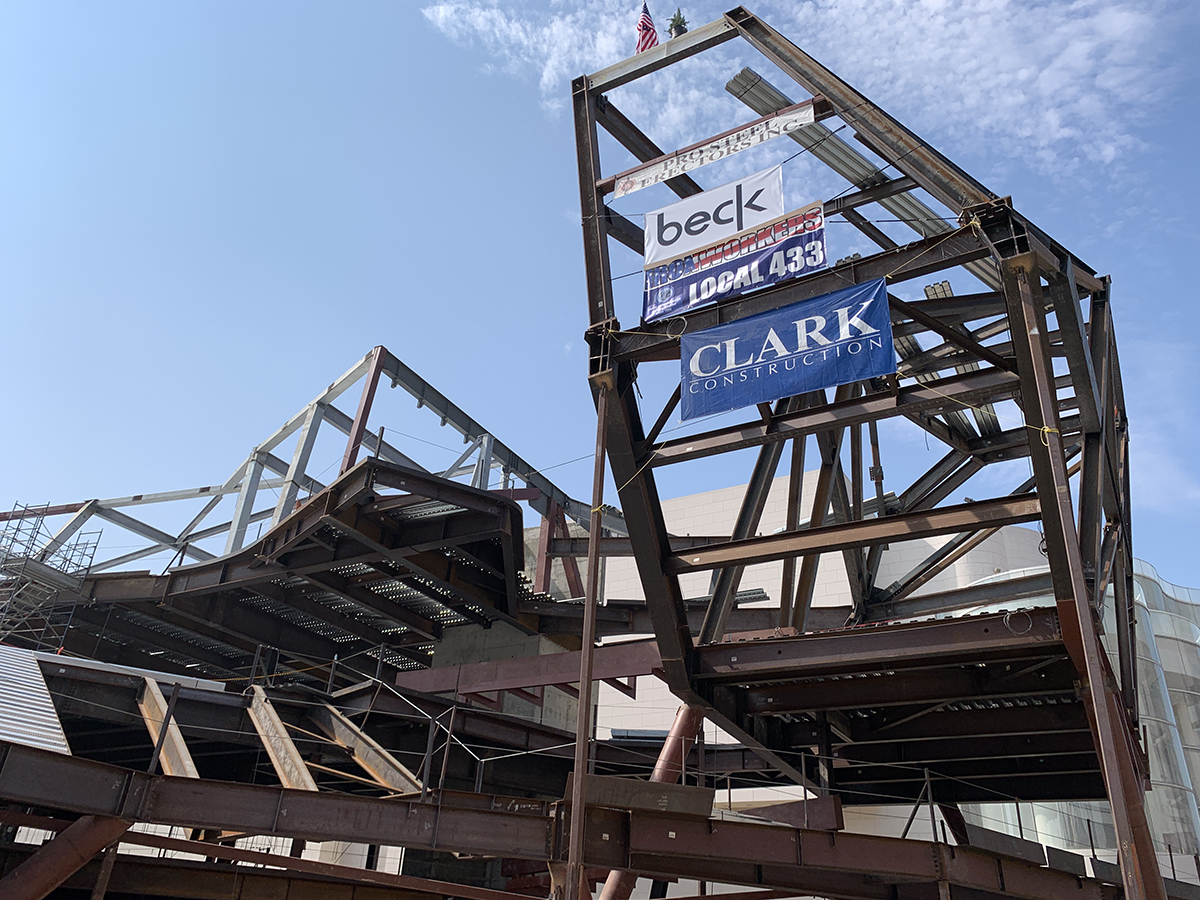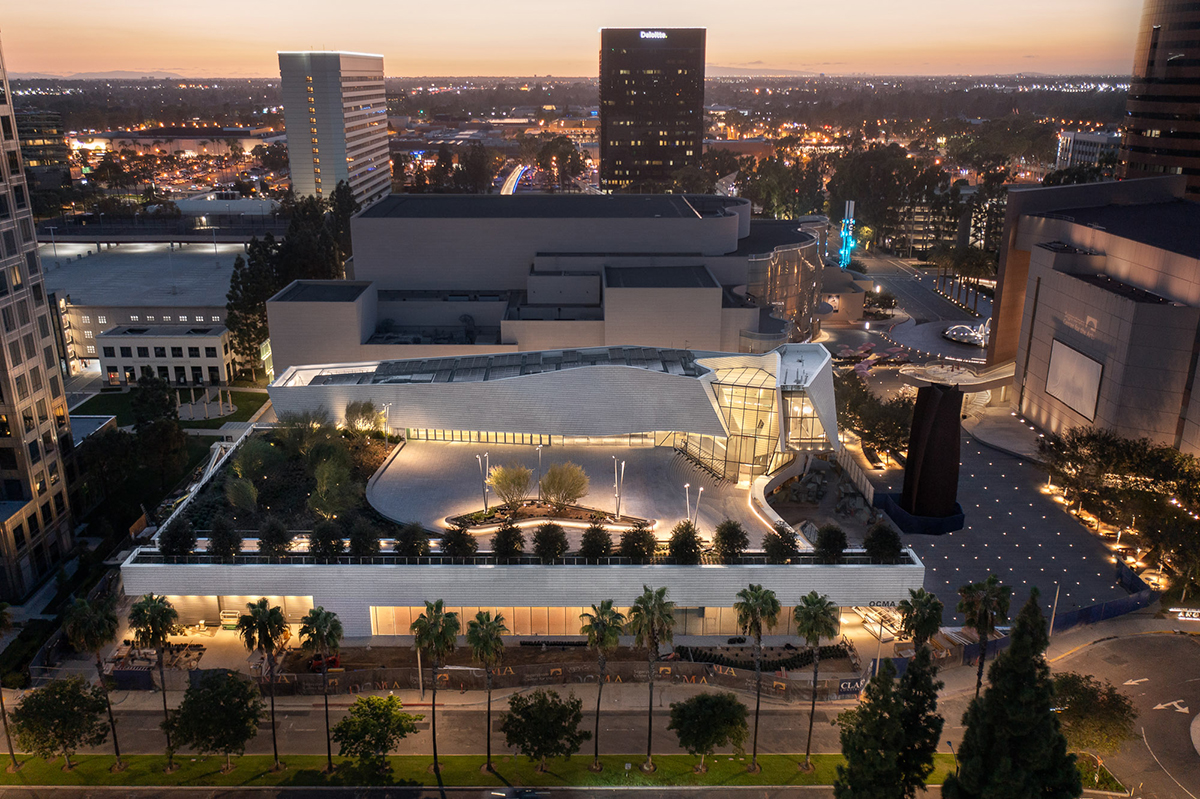AISC
Orange County Museum of Art
National Award - $15 million to $75 million
The Orange County Museum of Art (OCMA) is a central component of the OC art scene. With a focus on 20th- and 21st-century art by artists with ties to California, the institution’s focus has always been to educate and inspire the community.
In the mid-2000s, as OCMA was contemplating an expansion beyond its space within a high-end commercial mall, it identified a suitable new home: a portion of the Segerstrom Center for the Arts in nearby Costa Mesa, a massive campus of performance venues and public spaces.
The museum’s new form is that of a flowing, irregular structure housing intimate small galleries, a reconfigurable main exhibition space, and a rooftop terrace for large-scale sculptural works. Located adjacent to the 3,000-seat Segerstrom Hall, it also serves as the final component of what was envisioned as a multi-disciplinary arts campus. With nearly 25,000 sq. ft of exhibition galleries--approximately 50% more than in the previous location--the new 52,000-sq.-ft space allows OCMA to organize major special exhibitions alongside spacious installations from its collection. The design complements and responds to the undulating façade of the neighboring concert hall and supports an outside-in and inside-out experience, and also features an additional 10,000 sq. ft for education programs, performances, and public gatherings, as well as administrative offices, a gift shop, and a café.
Visitors approach the new structure via an at-grade plaza punctuated by the 66-ft Connector sculpture by Richard Serra, and at the far end of the terrace is a sweeping staircase that looks over the entryway and central campus walkway, intended as a lounging and meeting place. The three primary gallery spaces within the flowing, irregular mass all required uninterrupted site lines, and the long-span spaces are arranged in complex configurations. The nonorthogonal architectural element—that, in places, cantilever more than 30 ft off the primary structure--and highly visible public spaces below a cantilever-trussed classroom wing required a structural material that could meet the aesthetic and functional needs of the design, endure the seismic forces of Southern California, and offer a sustainable, economically fabricated option. A high-bearing-strength material was also required for the necessary reduced column section below the massive girders that span the ground floor gallery. As such, structural steel was envisioned from the outset by the design team as the material of choice since it met all of these primary needs. The structure does employ concrete shear for the shear walls, but using it for floor framing would have been prohibitively heavy--and due to the sheer size of the members required, it would not have supported the architectural proportions desired for the galleries and public space elements.
The museum’s design provides flexible and functional spaces over four levels, including a mezzanine and mechanical level. The main floor is dedicated to 60-ft-long open, reconfigurable internal and street-front galleries that can accommodate temporary and permanent exhibits. Maintaining the architectural clarity while supporting these long-span spaces was a significant challenge, made more difficult by the requirement that the soffit maintain a consistent elevation throughout, which limited the depth of steel beams and girders. This was solved in the ground floor gallery by adding a 700-lb-per-ft plate girder that spans roughly 68 ft at the terrace, with ten beams framing into it, and has a self-weight of roughly 24 tons.
A spacious roof terrace, equivalent in size to 70% of the building’s footprint, serves as an extension of the galleries, with a sculpture garden and reconfigurable open-air spaces. In order to maintain column-free spaces at the indoor-outdoor threshold of the terrace, a full-story steel truss was cantilevered off of a concrete elevator core.
Further supporting the irregular geometries are two 5-ft-deep built-up plate girders that support the cantilevered planter, known as the “plantilever,” on the northeast side of the terrace. These girders have a cantilever of roughly 40 ft, and one of them is supported by another cantilevered beam underneath it. The tip of one of these girders was cambered upward 3.5 in. to meet the project deflection criteria.
Finally, the unusual geometry of the museum’s classroom component presented highly specialized superstructure and secondary structural design challenges. This public element is supported via a 36-in.-deep cantilevered truss with roughly a 68-ft span that simultaneously cantilevers and slopes up past the columns all the way to the front of the classroom. The truss is supported on 20-in.-diameter sloping columns that work in pairs to resist competing forces that develop as a result of their sloped geometry. Collectively, the element had a unique shape, sloping walls, special concentric braced frames, full-story-seep trusses, and a cantilever east end, which created multiple nodes where some or all of these elements intersected. Aligning these elements with architectural, MEP, and other systems required near-constant 3D model integration with the team, and drafting details created in collaboration with the steel detailer and erector also facilitated constructability and efficient fabrication.
The structural system used special concentric braced frames with bolted connections designed to buckle in the plane of the frame, allowing for quick erection and reducing the size of the SCBF gusset plates. Because these elements were bolted and not welded, the gusset plates were smaller, allowing more architectural freedom.
While primary systems were designed at the same time, secondary systems were not determined or designed until much later in the production process. One such instance was with the façade, a series of differentially angled planes with radially curved surfaces connecting the various planes, all of which are clad with a terra-cotta rain screen system. Structurally, this required a geometrically complex secondary steel system that would support the façade and the long-span glazing system. That secondary system also required full structural integration that would be compatible in terms of loads and movements between the systems and eliminate independent support structures for each. The primary structure anticipated large, eccentric loading from the façade’s secondary steel frame long before any specific load magnitudes or locations were available. The structural team used historical experience with these systems to design secondary steel frames that could inform loading assumptions for the primary structure.
At the outset of the design process, the team developed a BIM execution plan to lock in geometries and collaboratively establish guidelines that allowed the steel design to remain efficient and reduce complexity in detailing. These structural “rules” offered designers the freedom to massage geometries to meet conceptual or aesthetic goals, but they also established reasonable load paths in the structural system to support those elements.
As questions arose, the guidelines also allowed the engineering team to consistently distill issues into fundamental parts while maintaining an understanding of the overall load paths—a necessity to meet the rigorous seismic requirements in an area known for high seismic activity. This was highlighted as the project moved from design to construction and design models were combined in a BIM environment with fabrication models. For the review of shop drawings, the structural team would review 3D drawings in Tekla in tandem with 2D drawings to verify conditions. Work points were pulled from the architect’s Rhino model by the engineering team and translated into the fabricator’s Tekla model, ensuring a level of accuracy that nearly eliminated cost overruns due to coordination.
Judge comment: “The use of steel throughout the building is both obvious and in some ways obfuscated, which told the jury that the architect and the structural engineers really understand the unique qualities and material capabilities of structural steel and found ways to use it to their design advantage--not just as a structural solution, but really more as a way of expressing and hiding the structure to play with the visitor’s ability to understand the building.” -Anders Lasater, AIA, architect and principal, Anders Lasater Architects
Owner: Orange County Museum of Art, Costa Mesa, Calif.
General contractor: Clark Construction Group, Irvine, Calif.
Architect: Morphosis Architects, Culver City, Calif.
Structural engineer: John A. Martin & Associates, Inc., Los Angeles
Steel Detailer: Anatomic Iron Steel Detailing, North Vancouver, B.C., Canada *AISC associate member*
- Project Category: Year 2023
- Location: Costa Mesa, CA
- Submitting Firm: John A. Martin & Associates, Inc.
- Photo Credit: 1, 3 - Jasmine Park; 2, 6, 7, 9 - Mike Kelley; 4, 5, 8 - John A. Martin & Associates, Inc.

